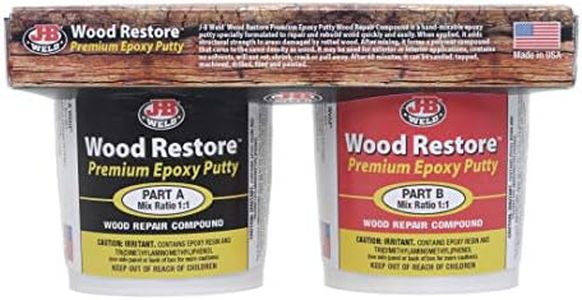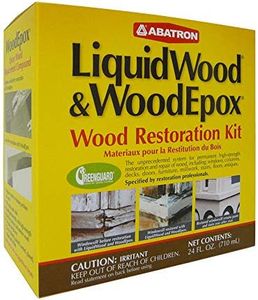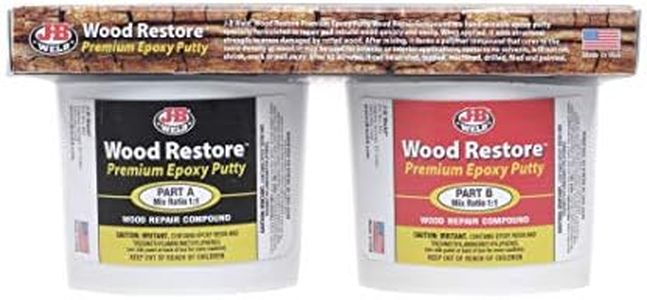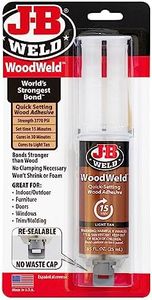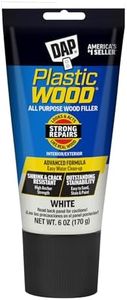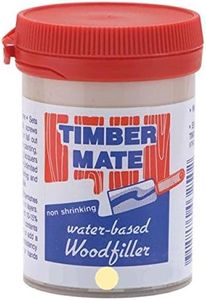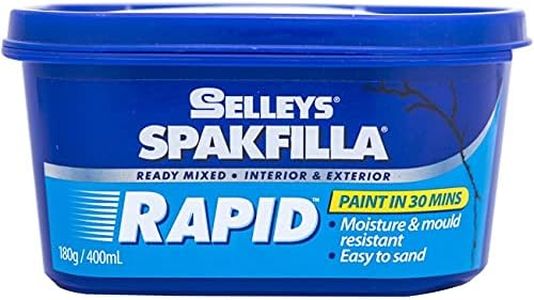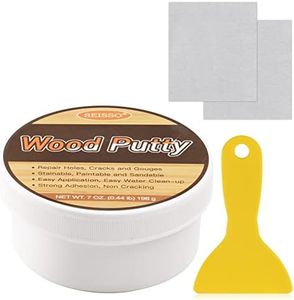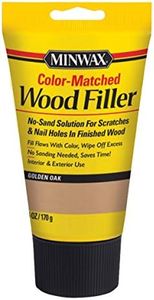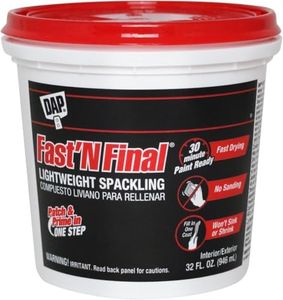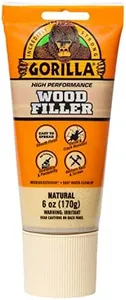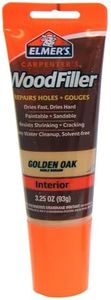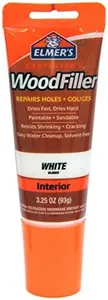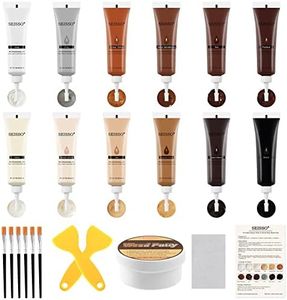We Use CookiesWe use cookies to enhance the security, performance,
functionality and for analytical and promotional activities. By continuing to browse this site you
are agreeing to our privacy policy
10 Best Outdoor Wood Fillers
From leading brands and best sellers available on the web.Buying Guide for the Best Outdoor Wood Fillers
Choosing the right outdoor wood filler is important if you want your repairs or woodworking projects to last, especially when exposed to the elements. The best outdoor wood filler will not only restore the look of your wood but also protect it from moisture, sun, and temperature changes. Consider what kind of repairs you’re making—small cracks, big holes, or rotted areas—to help guide your choices. Know that for outdoor use, durability and weather resistance matter even more than for indoor fillers.Durability and Weather ResistanceThis spec tells you how well the filler stands up to rain, sun, frost, and other outdoor conditions. Some fillers are made specifically to be waterproof and to expand and contract a little as the wood moves in different weather. When picking a filler, make sure it is labeled for exterior or outdoor use—these are made to hold up longer outside. For especially harsh climates or high-moisture areas, look for products that highlight extra weatherproofing or water resistance.
Application Type (Pre-mixed, Powder, Two-Part Epoxy)Outdoor wood fillers come in different forms: pre-mixed paste, powder you mix with water, or two-part epoxy that you mix yourself. Pre-mixed is easiest for small repairs; powder can be good if you want flexible consistency or have bigger repairs; two-part epoxy is strongest and best for large holes or very damaged wood. Your choice depends on the size and type of repair: simple dings can use pre-mixed, while serious structural damage or rot is best filled by two-part epoxy.
Sandability and PaintabilityAfter the filler dries, you often want to sand it smooth and paint or stain over it so it matches your project or repair. Some fillers accept sanding and paint better than others. Sandability matters when you want a level, smooth finish, and paintability or stainability is key if you want the repair to blend in. If you plan to finish the surface, pick a product that specifically says it can be sanded and painted or stained. For highly visible areas, prioritize this feature.
Drying and Curing TimeThis tells you how long it takes before you can sand, paint, or expose the filled area to rain. Fast-drying fillers are good for quick fixes or when bad weather is expected, but very quick-drying products can sometimes be harder to work with for big fills. If you have larger or deeper areas to fill, slower-curing fillers might actually give better results and strength. Decide based on how big the repair is and how much time you have before the area needs to be used.
Structural StrengthStructural strength means how well the filler can bear weight or force. Not all fillers are strong enough for load-bearing repairs. If you’re filling in cosmetic cracks or small holes, most fillers will do. But if you need to restore part of a fence post, deck, or something you lean or step on, look for fillers rated for structural or heavy-duty use, such as two-part epoxies. Your need is the guiding point: the more important the area is for safety or stability, the stronger the filler should be.
